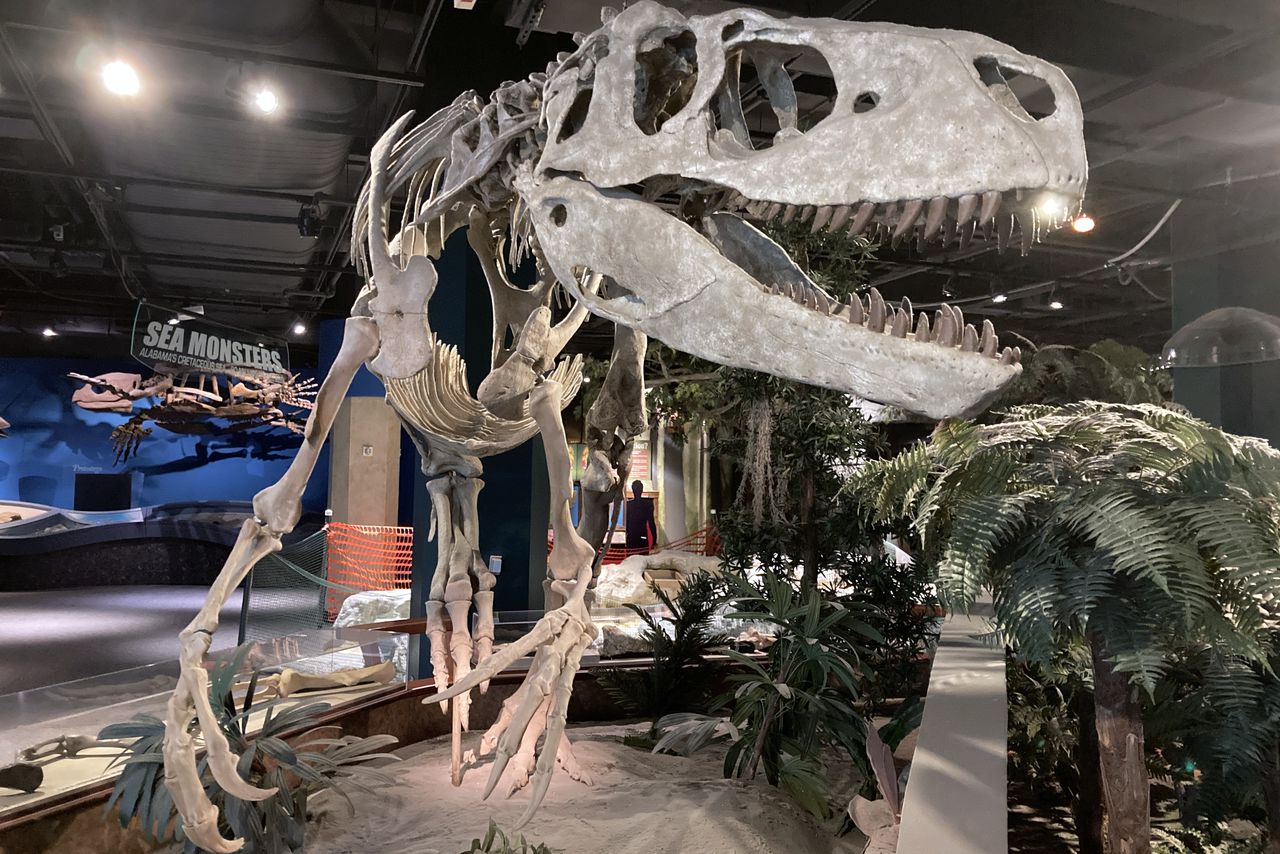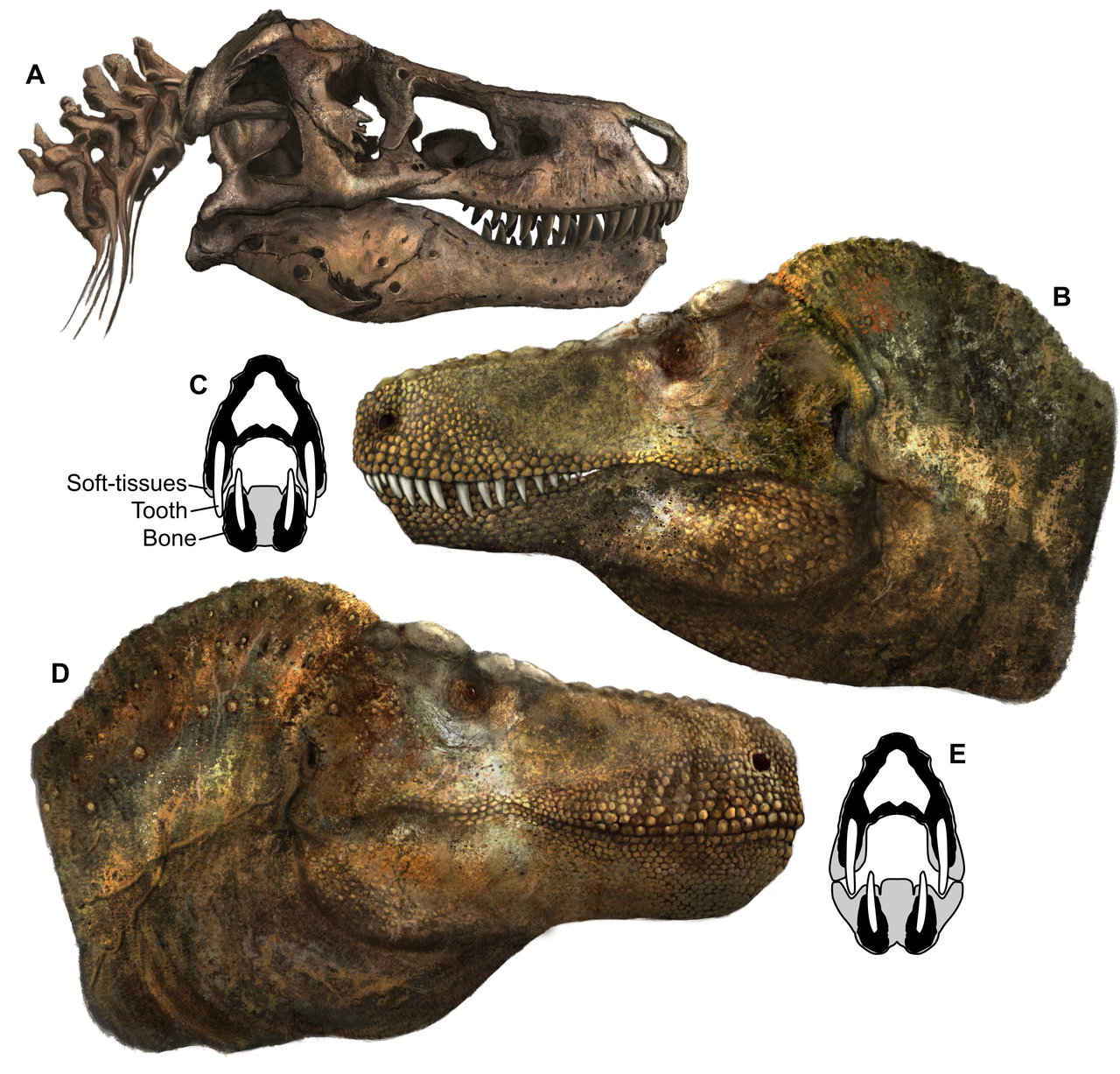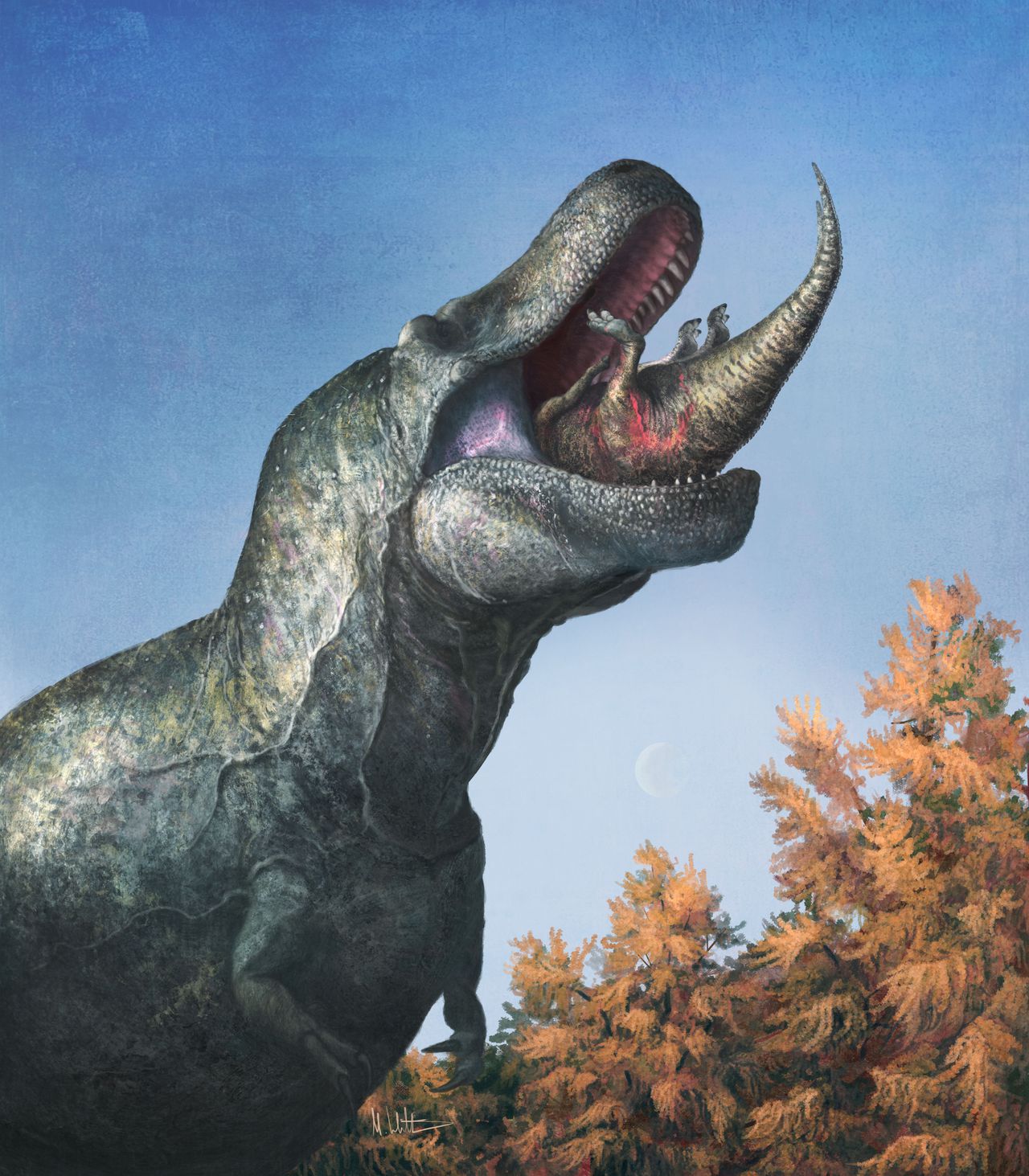Did Tyrannosaurus rex have lips? Auburn professor’s research suggests yes
Jurassic Park might have been lying to us all along.
The Tyrannosaurus rex’s terrifying toothy grin from the films may not have been an accurate representation, according to new research by an international team that includes Thomas Cullen, an associate professor of paleobiology at Auburn University.
A paper published Thursday by Cullen and a team of researchers concludes that therapod dinosaurs — like T-rex and the velociraptors featured in the Jurassic Park films — likely would have had fleshy lips covering their teeth instead of those menacing mandibles.
“We started that project largely because you often see very different portrayals of these animals in the media and in other sources, where sometimes they have their teeth bared when their mouths are closed,” Cullen said in a news release. “And in other cases, you can’t see their teeth at all when their mouths are closed because they have lips.
“So, we were curious what evidence exists to support either of these scenarios.”
A paper published in the journal Science on March 30, 2023 suggests that therapod dinosaurs like Tyrannosaurus rex would have had lips like the one in this artist’s rendering.Courtesy Auburn University
After examining things like tooth wear, the size and scale of therapod skulls and teeth, and comparing T-rex skulls to those of modern-day lizards and crocodiles, the researchers concluded that the heads of these ancient predators would have looked more like modern-day lizards than crocodilians with exposed teeth.
“We reconstructed soft tissue anatomy, compared dental measurements and studied dental health and wear records to further uncover that what you are used to seeing on the big screen is not accurate,” Cullen said. “The teeth of these theropod dinosaurs did not experience wear and tear like a crocodile, and most likely had a lip-like covering.”
The results of the comparison were published in the journal Science on Thursday.
The research team included Cullen; Kirstin Brink, assistant professor, Department of Earth Sciences at the University of Manitoba; Mark P. Witton, University of Portsmouth; and Derek Larson, collections manager, Royal BC Museum in Victoria, British Columbia.
Cullen said the lips likely would have been different from mammal lips that can move and form different expressions.
“Dinosaur lips would be very different from our lips, in that although they would cover the teeth, they could not really be moved independently, couldn’t be curled back into a snarl, or make other sorts of movements we associate with lips in humans (or other mammals),” Cullen said. “In this way, dinosaur lips would be more similar to those of many lizards or amphibians, even if we typically associate the structure of lips with mammals like ourselves.”
The appalachiosaurus, an evolutionary cousin of T-rex discovered in Alabama, is also a theropod dinosaur, meaning it may also have had the fleshy lips covering its intimidating teeth.

The Appalachiosaurus Montgomeriensis on exhibit at the McWane Science Center in Birmingham, Ala.Dennis Pillion
The results of the study have not been universally accepted.
Thomas Carr, a paleontologist at College in Wisconsin, told The Washington Post that he found the study “completely unconvincing.”
Carr published a study in 2017 indicating that therapods had leathery, croc-like skin, which would suggest they were lipless.
Carr told Science that until someone finds a better preserved T rex skull, the debate will likely rage on.
“I think the day will arrive where somebody will find a fossil mummy of a Tyrannosaur,” Carr said. “But in the meantime, we won’t truly know.”

A study published March 30, 2023 in the journal Science, indicates therapod dinosaurs likely had fleshy lips covering their teeth, as depicted in figure D.Auburn University
